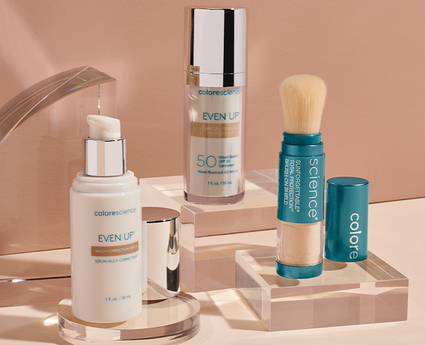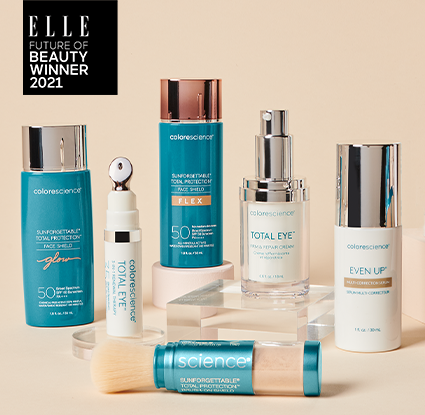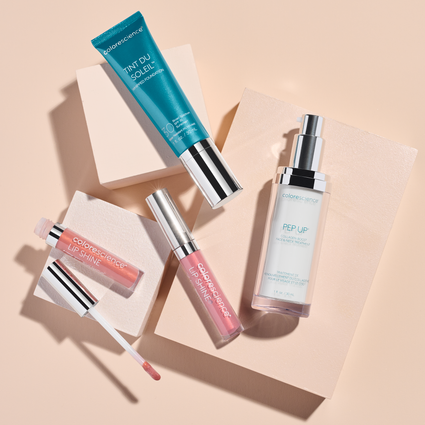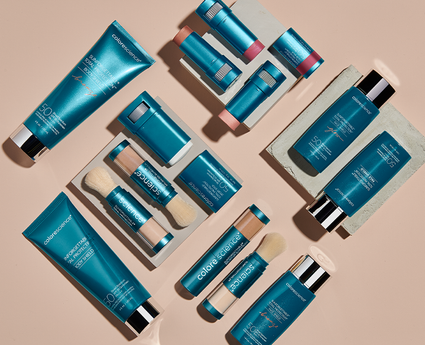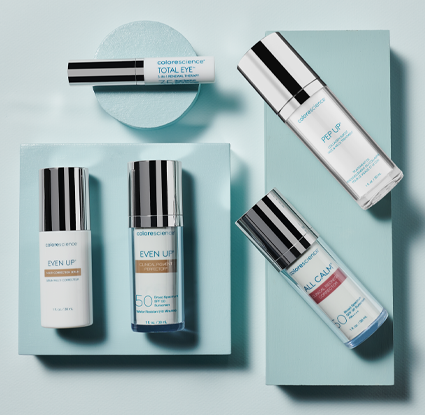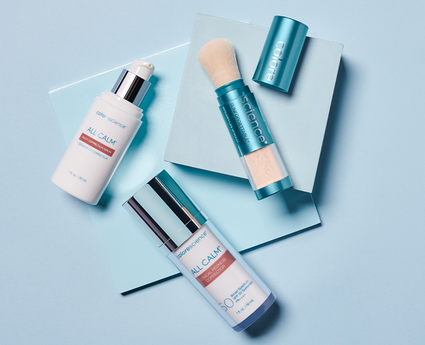Can You Get a Sunburn in the Shade [And How to Prevent It]
You might be under the impression that if the sun isn’t directly beaming down and heating up your skin, that you’re safe from sunburn. However, that’s not always the case. While you might not feel the burn developing, that nice tree or umbrella you’re sitting under may not be enough to block out all the sun’s rays.
In fact, this misconception can put you at risk of discomfort and even danger like skin cancer. According to the Surgeon General, 1 in 3 people report experiencing sunburn each year. Sunburns are so frequent, even the most attentive people who try to their best to stay out of the sun often get them. Part of the problem may be that proper protection measures aren’t being taken.
That’s where we come in. In this guide we’ll provide answers to your questions like “can you get sunburn in the shade?”, “do you need to wear sunscreen in the shade?” and “how can you protect your skin against sunburn?”. Keep reading to learn how to protect yourself.
Can you get a sunburn in the shade?
If you’ve suddenly found yourself wondering “can you get a sunburn in the shade?” because you’ve always thought you were making the safe choice by seeking out a covered area, it’s important to know that, yes, you can still get a sunburn in the shade. While sitting in the shade can help reduce direct sun exposure, it doesn’t always fully protect you. The fact is that, even though you might not have the sun directly beating down on your skin, UV rays can still reflect off the surfaces around you.

The protection you get from sitting in the shade depends on the coverage that structure provides. For example, are you sitting under a sparse tree that provides some shade, but still let’s some sun trickle in? Or are you sitting under a well-made, large umbrella designed to guard you from the sun?

Another factor to consider when evaluating just how much of a risk you’re at for sunburn in the shaded area you’ve chosen is the position of the sun. Meaning that, the angle of the sun changes where it reaches, so if you’re sitting under a tree that’s fully shading you in the early afternoon, it may not provide the same level of shade hours later. That’s why it’s important to pay attention to where the sunlight reaches throughout the day as you’ll likely have to move to avoid the reach of it’s rays.
So, can you get a sunburn in the shade? Yes, you can—which can be highly frustrating. However, shade is only one aspect of sun protection. It can help reduce your risk, but it can’t completely shield you.
How to prevent a sunburn when outside
Not only do you need to worry about the answer to “can you burn in the shade?”, but you need to be asking “how can you prevent a sunburn?". According to the Skin Cancer Foundation, having five or more sunburns doubles your risk of melanoma. Preventing sunburn should be one of your top priorities when heading outdoors.
In addition to seeking out a shady area to lounge in, you should also:
- Wear sunscreen whenever you’re going outside—yes, you even need sunscreen in the shade. Not just any sunscreen will do though. It needs to be SPF 30 or higher and broad spectrum. Broad spectrum means that it guards against both UVA and UVB rays, which is essential for a full range of protection.
- Make sure to reapply sunscreen frequently. Standard reapplication is every two hours. However, if you’re going to be exposed to water or sweating a lot, you should reapply more frequently—every 40 to 80 minutes, depending on the water resistance level of the sunscreen you’re using.
- Cover your skin when possible. Wear a hat to help shield your face and if it’s not too hot, consider wearing long sleeves and pants that provide somewhat of a barrier between the sun and your skin. Don’t forget to wear sunglasses to protect your eyes too.
If you have fair skin, you are more susceptible to sunburn, so it is especially important that you take steps to protect yourself.

How to protect your skin
There are several measures you can take to protect your skin to help you prevent sunburn in the shade. Follow these steps to take care of your skin:
- Avoid spending time exposed outdoors when the sun’s rays are strongest—between 10 am and 4 pm.
- Wear a sunscreen that doesn’t include chemical ingredients. Chemical sunscreen contains ingredients that can irritate your skin or even enter your bloodstream. Instead, you want to wear a mineral sunscreen (also known as physical sunscreen). Mineral sunscreens like Colorescience use natural ingredients to protect your skin and sit on the surface, which make them a safer alternative.
- If you are sunburned, do not pop blistering, as this could lead to infection according to the American Academy of Dermatology Association. Additionally, if you’re peeling as your sunburn heals, do not try to pick or peel it further—this can lead to scarring. Give your skin the time it needs to heal.
Out of this list, the most proactive thing you can do to protect your skin both today and beyond is to wear sunscreen daily. How does sunscreen protect your skin? Sunscreen—specifically broad-spectrum sunscreen—guards against both types of UV rays to help prevent skin damage, sunburn, and skin cancer.
For high-quality protection—both from UV rays and environmental factors—that’s gentle on skin, check out our line of mineral sunscreens, including:
- Sunforgettable® Total Protection™ Brush-On Shield SPF 50: This mineral powder sunscreen is dispensed using the applicator brush that helps you achieve an even application. This sunscreen solution is available in four skin tones and we also have a sheer option.
- Sunforgettable® Total Protection™ Face Shield Classic SPF 50: This liquid sunscreen has a weightless texture that is both comfortable and effective. The formula blends into skin for a sheer finish.
- Sunforgettable® Total Protection™ Sport Stick SPF 50: This stick sunscreen is hydrating and easy to apply, simply twist up and rub the sunscreen in. This formula glides on white, so you can see where you’ve applied it, but dries clear.
It’s important to note that even if you have a darker skin tone, it’s still essential that you wear sunblock* every day. While you might not be as susceptible to sunburn, according to the American Cancer Society, UV exposure alone can raise your risk of developing skin cancer.

How to treat a sunburn
Sunburn can leave your skin highly sensitive, red, and hot. Sometimes it can even make it nearly impossible to sleep. And we haven’t even mentioned the peeling yet. Even if you only have a slight sunburn, finding relief as quickly as possible will help prevent further damage and discomfort.
If you’ve gotten sunburned even though you were sitting in the shade, here’s what you can do to help it heal:
- Use aloe vera: Aloe vera has soothing properties that can help with inflammation and discomfort.
- Take an anti-inflammatory medication: Anti-inflammatories like ibuprofen can reduce pain, fever, and swelling.
- Keep the skin cool: You can do this by taking cool baths or showers as your skin heals. You can also find some relief by wetting a cloth with cool water and placing it on the area.
- Stay hydrated: Drinking extra water while you have a sunburn can help keep you from becoming dehydrated and maintains moisture in the skin to help your sunburn heal faster.
While it can be frustrating to give your skin the time it needs to heal from sunburn—especially from the severe ones—it’s important to take care. This includes avoiding direct sunlight or further sun exposure at all until you’ve recovered.

What SPF should I use?
The general recommendation is that you should wear sunscreen with SPF 30 or higher—usually, this means SPF 30 or SPF 50.
You may have seen some sunscreen brands that offer SPF 100 and you might be thinking, shouldn’t I use that level of SPF if I want to be fully protected? Not necessarily. This is because SPF 100 can provide a false sense of security.
The way SPF works is that it protects you against a certain amount of UVB rays. The label—15, 30, 50, or 100—is indicative of the SPF level, not the percentage of rays it blocks. For example:
- SPF 15 offers 93% protection
- SPF 30 offers 97% protection
- SPF 50 offers 98% protection
- SPF 100 offers 99% protection
Colorescience has a variety of safe and gentle sunscreen options in SPF 50 and SPF 30—like our sunscreen stick—that you can easily take with you on the go.
Go Forth and Enjoy the Outdoors Safely
Next time you find yourself thinking “can I get sunburned in the shade?”, keep this article in mind. By all means, find a shady tree to help protect you from the heat and the worst of sun exposure. However, while it might be more comfortable in the shade, remember that that doesn’t mean you’re fully protected from the sun’s harsh rays. Make sure to follow these tips to help protect your skin and health. Not only will following these recommendations help you avoid the short-term pain of sunburns, it can help reduce your risk of long-term risks like skin damage and cancer.
*Sunblock is not a term approved by the FDA. Colorescience refers to our products as sun protection.

